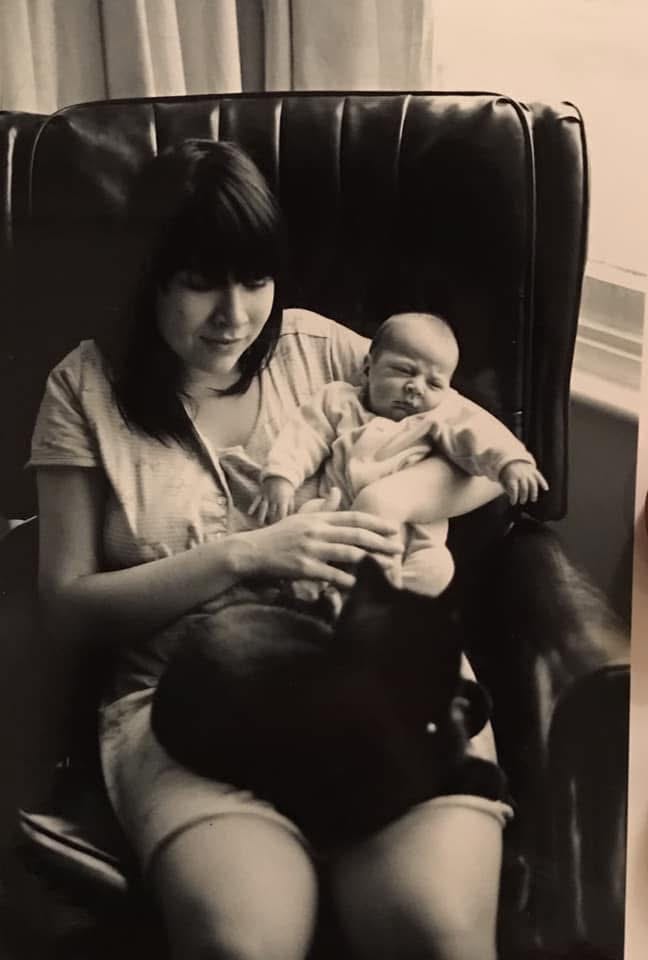The Benefit Scrounger
With all the noise about cutting PIP to “get people back to work,” I thought it might be helpful to share my own experience with disability benefits over the last 27 years.
Starting Out
In 1998, when I was 17, I quit college and moved to Sheffield to be with a terrible boyfriend who was starting uni up there. I got a job at RMC Kingston, a cement company — yes that was as thrilling as it sounds. I worked in an office full of people who were fascinated by my Essex accent and made a lot of EastEnders jokes.
Then I got an ulcer on my foot — pretty common when you can’t feel your feet. I ignored it, hoping it would sort itself out. It didn’t. It got infected and gross — much like the relationship I was in — so I moved back home to my mum and dad’s and dumped the terrible boyfriend.
At this point, my mum was in touch with a Spina Bifida charity. They suggested I apply for Disability Living Allowance (DLA) (now known as PIP) because, given how often I was in hospital and the fact that I was losing toes left, right, and centre, it was pretty clear that full-time work wasn’t realistic for me.
Mine and my wonderful late Mum’s relationship wasn’t great when I was younger. Living together again wasn’t gonna work so I knew I needed to move out.
My parents helped me put together a deposit, and I moved into a tiny studio flat. Well, actually it wasn’t as simple as that. I was armed with a deposit and rent (housing benefit) that would be paid directly to them from the council but because I didn’t work I was turned down for loads before we found someone who would accept me. The stigma around not working was as strong then as it is now.
So I claimed housing benefit and income support because I couldn’t work. For the next four years, I bounced between flats, claimed benefits, and tried out various voluntary jobs — but inevitably, I’d end up with another ulcer, back in hospital, and back to square one.
2000s
In 2005, I was pregnant with my first baby. My now ex and father of my eldest two kiddos was working a low-income job, so even though he was employed, we still needed benefits as a top-up to get by.
When we broke up in 2010, I was training to be a counsellor and not working. I had to go back to claiming full benefits to look after myself and the kids.
A few years later, I met Jase. When we moved in together, I lost all my benefits except for DLA. Suddenly, Jase was expected to cover the rent and all the other costs for the three of us that I had previously managed to cover with my income support.
For a lot of disabled people, this is where things get dangerous. Losing benefits when you move in with someone leaves you financially vulnerable — which makes it harder to leave if things turn abusive. I was lucky. Jase is lovely and could afford to support us — but even then, it was a struggle and a stretch to meet our basics.
Work Isn’t That Simple
Over the last 15 years, I completed that counselling training and worked both in the public and private sector. Till my disability had me out of work for a few years again. I’m lucky now I get to make a living from making silly ads and occasional writing, speaking and consulting. I’ve built a career doing the work I love. Self-employment suits me — but there’s always that underlying anxiety about when the next job will come in or if I’ll be well enough to work at all.
I’ve tried more stable work, I’ve gone for a few steady jobs over the years but because of my disability, it hasn’t worked out. Self-employment works for me — but I still need PIP. Without it, I wouldn’t have a car, couldn’t cover the cost of my wheelchair and adaptations, and wouldn’t be able to manage the extra costs that come with being disabled.
It’s Not About Motivation — It’s About Barriers
There were times when I worked and times when I relied solely on benefits — but whether I was working or not, my value didn’t change. It just felt like it did.
The rhetoric about “benefit scroungers” was just as loud in the late ‘90s and early 2000s as it is now — and it absolutely needs to change. There are so many barriers for disabled people trying to work:
• Inaccessible workplaces — 1 in 5 disabled workers report their workplace is physically inaccessible.
• Phasing out remote work — 40% of disabled employees say they need work-from-home options to manage their health needs.
• Lack of flexible working — 44% of disabled workers say they’d struggle to stay in work without flexible hours or remote options.
• Higher costs — Disabled people face an average of £975 a month in extra living costs.
Cutting disability benefits to push people into work in a fundamentally inaccessible system is ridiculous. Plus some people just aren’t able to work for various reasons and they’re valid and deserve to live a comfortable life too.
Worried About PIP Cuts?
If you’re worried about the proposed changes to PIP, here are some helpful resources:
• Scope – Understanding PIP and how to challenge decisions
• Citizens Advice – How to appeal a PIP decision
• Disability Rights UK – PIP guidance and support







This exactly. I’ve never been able to get a job let alone keep one. Still worthy.
PIP has helped me so much to the point where I can now work part time. I wouldn’t be able to work full time (I’ve tried) and would end up having to claim more of the benefits I’m entitled to. PIP isn’t perfect but it can be life-changing and hearing a politician regard it as like a child’s pocket money is as infantilising as it sounds